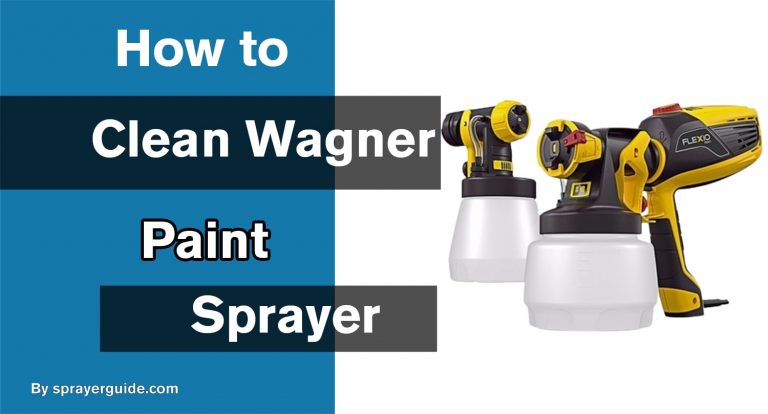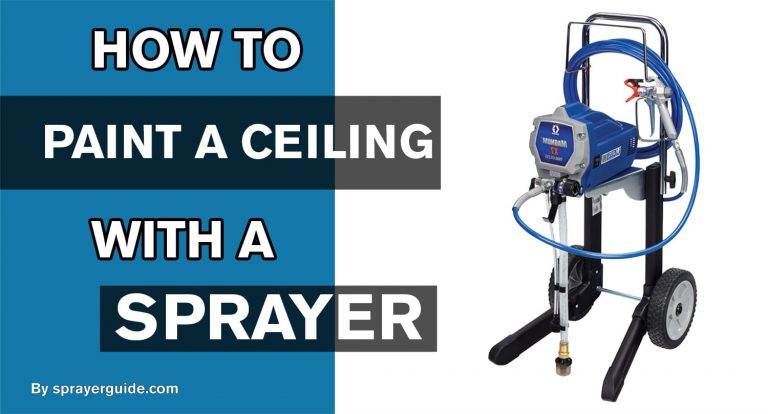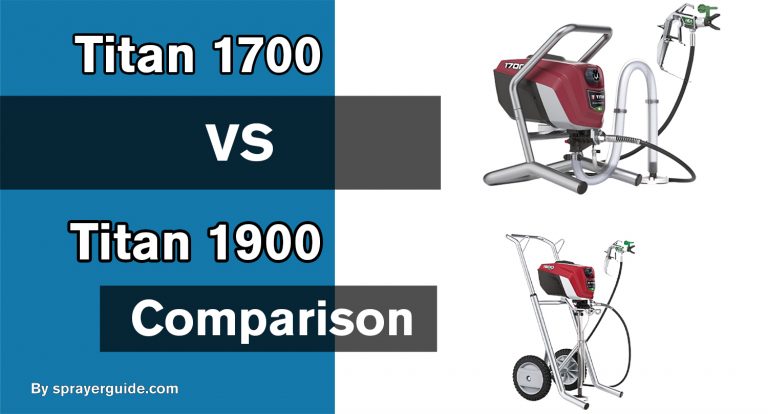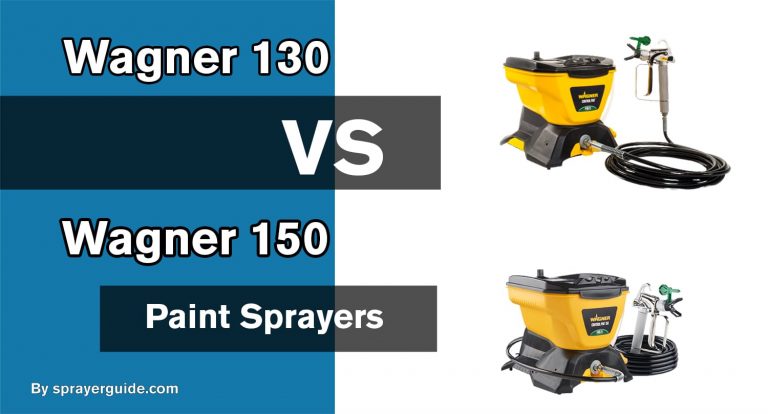There are a few different ways to paint. You can use a paintbrush, a roller, or a paint sprayer. A paint sprayer will get the job done the fastest and most effectively. There are a lot of different paint sprayers on the market, and it can be hard to choose the right one. In this article, we’ll talk about the different kinds of paint sprayers and help you choose the one that will work best for you.
There are three main types of paint sprayers:
- Airless Paint Sprayers:
- Compressed Air Paint Sprayers:
- HVLP Paint Sprayer:
Paint sprayers can save you a lot of time and effort when painting. But, with all the different types and brands of paint sprayers on the market, how do you know which is right for your project? This article will help you choose the best paint sprayer for your needs based on the type of project you’re working on and your level of expertise.
Airless Paint Sprayers
Airless paint sprayers are a type of paint sprayer that uses a high-pressure pump to force paint through the sprayer tip. The pressure generated by the pump atomizes the paint into tiny droplets, which are then sprayed onto the surface to be painted.
The advantage of using an airless paint sprayer is that it can achieve a smooth, even finish on surfaces that would be difficult to paint with a brush or roller. Airless paint sprayers are also very efficient, using less than traditional paint. If you’re considering purchasing an airless paint sprayer, it’s essential to understand how they work and what types of surfaces they can be used on.
To ensure optimal results, always follow the manufacturer’s recommendations for tip selection.
Frequently Asked Questions:
Airless paint sprayers can apply various paints and finishes, including latex, oil-based, and urethane paints. They are also capable of spraying thicker materials such as stains and sealers. Additionally, airless paint sprayers can cover large areas quickly and evenly, making them ideal for painting walls, ceilings, and other large surfaces.
When using an airless paint sprayer, it is essential to wear proper safety gear, including a respirator, goggles, and ear protection. It is also essential to use the machine in a well-ventilated area. Additionally, always follow the manufacturer’s instructions for setting up, operation, and maintenance.
Common problems when using an airless paint sprayer include clogs, leaks, and overspray. Clogs can be caused by dirt or debris in the machine or paint itself. Leaks can occur if the pump or hose is not properly sealed. Overspray can happen if the sprayed material is too thick or the spray tip is too small for the job.
Always clean the machine according to the manufacturer’s instructions to avoid clogs and use high-quality paint. To prevent leaks, ensure all connections are tight and seal any cracks or holes with tape. To prevent overspray, thin the material if necessary and use the proper size spray tip for the job. If a problem does occur, consult the manufacturer’s troubleshooting guide for guidance on how to fix it.
Some general tips for using an airless paint sprayer include always using fresh paint, thinning the material if necessary, and testing the machine in a small area before beginning the job. Additionally, follow all safety instructions and always wear proper safety gear when using the device.
Compressed Air Paint Sprayers
A compressed air paint sprayer is a tool that uses compressed air to push the paint out of the tip, giving the surface a smooth, even look. Compressed air systems are easy to use and don’t require much experience to get a good job done.
However, it’s important to take safety precautions when using this equipment, such as wearing eye protection and a respirator mask to avoid breathing in any paint that falls in the wrong place. A typically compressed air sprayer has a high-pressure hose, a spray gun, and a canister that holds the compressor. All of these parts work together to make painting easier and less messy. Thanks to the compressed air, you’ll have better control over the paint application process and be able to achieve a professional-looking finish.
Frequently Asked Questions:
The compressor in a Compressed Air Paint Sprayer forces air through a small nozzle, breaking the paint into tiny droplets. These droplets are then sprayed onto the surface being painted.
There are many benefits of using a Compressed Air Paint Sprayer, including the following:
· Increased productivity:
Compressed air paint sprayers are much faster than traditional painting methods, such as brushes or rollers.
· Improved quality:
There is less over-spray and paint waste with a compressed air paint sprayer.
· Less mess
The high pressure of the compressor ensures a consistent, even finish.
There are some potential drawbacks to using a Compressed Air Paint Sprayer, including:
· Initial investment
Compressed air paint sprayers can be more expensive than other painting methods.
· Training required
Operating a compressed-air paint sprayer requires some training and practice.
When choosing a Compressed Air Paint Sprayer, consider the following factors:
· The type of paint you will be using
Some compressed air paint sprayers are designed for specific types of paint, so choose one compatible with the paint you will be using.
· The size of the area you will be painting
A larger compressor will be required for larger areas.
· Your budget
Compressed air paint sprayers can range from very affordable to quite expensive. Decide how much you are willing to spend on your new paint sprayer.
To keep your Compressed Air Paint Sprayer in good working condition, be sure to:
Read the owner’s manual carefully and follow all instructions.
Drain the compressor after each use to remove any moisture that has accumulated.
Clean the nozzle and paint cup regularly to prevent clogs.
If you would like more information on Compressed Air Paint Sprayers, there are several resources available:
The owner’s manual for your specific model of paint sprayer.
Online forums are dedicated to painting and paint spraying.
Websites of companies that manufacture or sell compressed air paint sprayers.
HVLP Paint Sprayer
“High Volume, Low Pressure” is what “HVLP” stands for. A steady flow of air moves the paint from the gun’s tip to the surface to be painted. People prefer HVLP sprayers because they are easier to use and make less mess and waste. After all, the pressure is lower.
Most of the time, HVLP systems work best with paints that aren’t too thick. You can’t use an airless sprayer to paint on latex. Industrial HVLP sprayers, on the other hand, can use more viscous liquids, but they cost more to buy or rent.
In an HVLP sprayer, a compressor or turbine breaks the paint into tiny pieces. Most models have a cup that you pour the paint into. The air and paint mix in the gun, and when you pull the trigger, the paint comes out of the tip in a fine spray.
Frequently Asked Questions:
Some benefits of using an HVLP paint sprayer include the following:
Reduced pump wear since air, not liquid, pressure is used to atomize the paint.
Increased transfer efficiency due to less pressurized spraying and larger nozzle orifices (resulting in less material wasted).
Lowered emissions due to less material waste- Greater control and less overspray.
An HVLP paint sprayer uses a high air volume to push paint through the nozzle at low pressure. This low pressure reduces overspray and waste while providing better control for the user.
There are two main types of HVLP paint sprayers:
Gravity-feed HVLP paint sprayers use a cup attached to the top of the gun to hold the material. Material is drawn into the gun by gravity and then forced out through the nozzle by the high volume of air.
Siphon feed HVLP paint sprayers use a cup attached to the bottom of the gun and draw material up into the gun through a siphon. The high volume of air forces the material out through the nozzle.
Nozzle orifices come in a variety of sizes, from small to large. The size you will need will depend on the type of material you are spraying and the desired results. Smaller orifices will produce a finer spray pattern, while larger ones will produce a coarser spray pattern.
An atomizer is a device that breaks up liquid into small droplets. An HVLP paint sprayer uses an atomizer to break the paint into small droplets that can be sprayed through the nozzle.
A pressure regulator is a device used to regulate the amount of pressure in an HVLP paint sprayer. The pressure regulator helps ensure that the correct amount of pressure is used to atomize the paint and produce the desired results.
An air compressor is a device that provides the high volume of air needed to operate an HVLP paint sprayer. Air compressors come in various sizes, from small portable units to large stationary units.
It is important to clean your HVLP paint sprayer after each use to prevent clogging and ensure optimal performance. To clean your HVLP paint sprayer, follow your owner’s manual instructions.
Factors to consider when purchasing a paint sprayer
Buying a paint sprayer can be a big decision. There are many factors you’ll need to consider before making your purchase. This guide will help you navigate the process and choose the right paint sprayer for your needs.
- You’ll first need to decide what paint sprayer you need. There are three main types of paint sprayers: airless paint sprayers, compressed air paint sprayers, and HVLP paint sprayers.
- Airless paint sprayers are ideal for high-volume painting projects. They use a pump to force the paint through the nozzle, so they can handle thicker paints and achieve a higher output than other paint sprayers.
- An air compressor powers compressed air paint sprayers. They’re well-suited for medium to large painting projects. These sprayers can generate a lot of oversprays, so they’re not the best choice for small projects or detailed work.
- HVLP paint sprayers are designed for high-quality, low-volume painting projects. They use a low air pressure to deliver the paint, so they’re very efficient and result in little to no overspray. HVLP paint sprayers are a good choice for small projects, touch-ups, and detailed work.
Once you’ve decided on the type of paint sprayer you need, you’ll need to choose the right model. There are many different factors to consider when choosing a paint sprayer, including:
The size of the project:
Choose a larger model if you’re planning on doing large painting projects. A smaller model will suffice if you only plan on using the paint sprayer for smaller jobs.
The type of paint:
Some paint sprayers are designed for specific types of paint, such as latex or oil-based paints. Be sure to choose a model compatible with the paint you’ll be using.
The level of detail:
If you need to achieve a high level of detail, such as when painting trim or cabinets, be sure to choose a model with adjustable settings that will allow you to control the amount of paint that’s released.
The budget:
Paint sprayers can range from around $100 to over $1,000. Be sure to set a budget before you start shopping so you can narrow down your options and find the best deal.
Once you’ve considered all these factors, you’ll be ready to choose the right paint sprayer for your needs. With so many different models on the market, it’s important to research and read reviews before making your final decision. By taking the time to find the best paint sprayer for your needs, you’ll be able to get the job done right and achieve professional-looking results.
Final Note:
If you’re still undecided about which paint sprayer is right for you, read our in-depth reviews of the top products. We’ll help you make a more informed decision to get the perfect tool for your needs.
Airless Paint Sprayers: Airless paint sprayers are one of the most popular types on the market. They’re perfect for large projects and can cover a lot of surface area in a short amount of time. An airless model is an excellent choice if you’re looking for a paint sprayer to help you get the job done quickly.
HVLP Paint Sprayers: HVLP (high volume, low pressure) paint sprayers are designed for precision painting. They’re perfect for small projects or for painting detailed surfaces. If you need a paint sprayer that can give you a smooth, even finish, an HVLP model is the way to go.
Compressed Air Paint Sprayers: Compressed air paint sprayers are similar to airless models but use compressed air instead of an electric pump to power the sprayer. These paint sprayers are perfect for medium to large projects. A compressed-air model is a good option if you need a powerful paint sprayer to handle much work.
Read More:
- How Long Does Primer Spray Paint Take To Dry
- How To Spray Paint Wood Chairs
- How To Thin Water-Based Paint For Roller
- How Long Does Spray Paint Take To Dry Metal
- Is It Better To Spray Or Roll the Interior Paint
- Does A Paint Sprayer Use More Paint Than A Roller
- How To Thin Water-Based Paint For Spraying
- How To Clean Wagner 350 Paint Sprayer
- How To Paint A Textured Ceiling With A Roller
- Which Is Better, Air Or Airless Paint Sprayer
- How To Use Hvlp Spray Gun
- How Long Does Spray Paint Take To Dry On Cardboard
- Graco Magnum Prox17 VS X5









